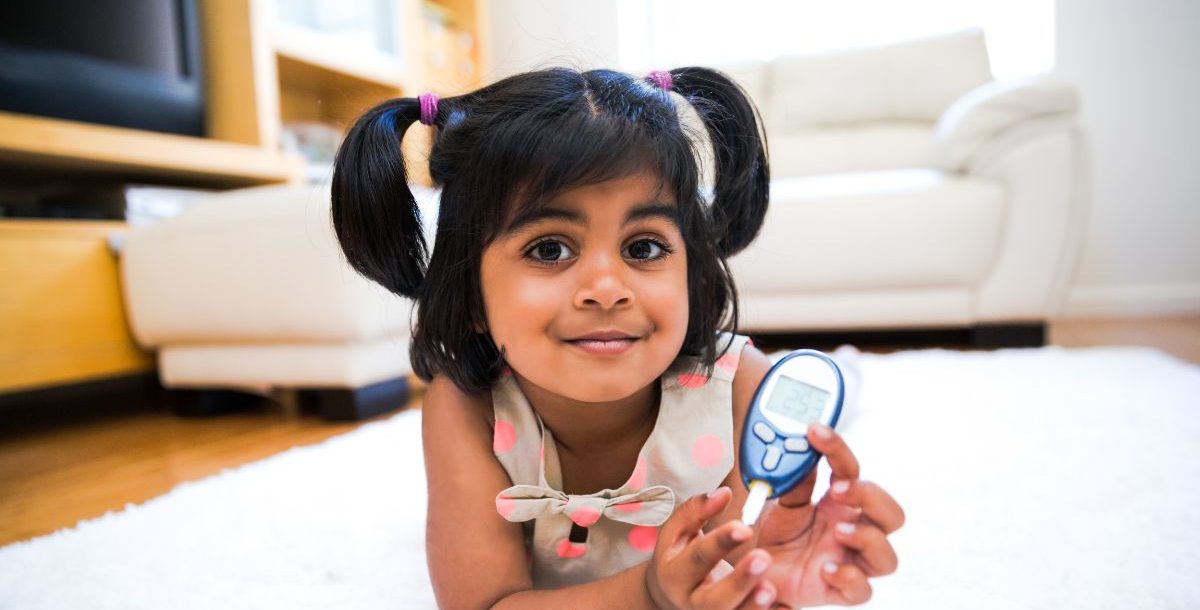It’s important to know the signs of diabetes in kids, with the rising trend of this diagnosis among children. Knowing what to look for can help parents ensure their children receive timely evaluation and care from their health care provider.
What is diabetes in children?
First off, diabetes is a chronic condition that affects how the body processes sugar, also known as glucose. In children, the most common forms are type 1 diabetes and type 2 diabetes.
While type 1 diabetes is an autoimmune disorder where the body’s immune system attacks insulin-producing cells in the pancreas, type 2 diabetes is linked to risk factors like obesity and family history. Both types disrupt the body’s ability to regulate blood sugar levels, leading to high blood glucose levels that can have serious health implications.
Common signs of diabetes in kids
Identifying the signs of diabetes in kids can be challenging since some symptoms may resemble other common childhood ailments. However, the following are key signs to watch for.
Increased thirst and frequent urination
One of the most noticeable signs of diabetes in kids is excessive thirst, known as polydipsia, and frequent urination, known as polyuria. When blood sugar levels are high, the kidneys try to remove the excess glucose by increasing urine production. This causes dehydration, leading children to drink more fluids, perpetuating the cycle of increased urination.
So, if your child is suddenly drinking more than usual and making extra trips to the bathroom, it may be time to see a pediatrician.
Extreme hunger
Diabetes can interfere with the body’s ability to use sugar for energy. As a result, children with diabetes often experience extreme hunger, also known as polyphagia, because their body cells aren’t getting the glucose they need, even though they may be eating more. This symptom can be especially concerning if it persists despite adequate food intake or if there is unexpected weight loss.
Unexplained weight loss
While weight loss may sound like a positive outcome for some children, unexplained weight loss without changes in diet or activity levels can be a red flag. This occurs because the body starts breaking down muscle and fat for energy when it can’t access sugar in the bloodstream. Children experiencing significant weight loss should be evaluated for diabetes, as this can indicate high blood sugar levels impacting their ability to maintain a healthy weight.
Fatigue and weakness
When a child’s body cells can’t absorb glucose properly, it leads to feelings of fatigue and weakness. This happens because sugar, the body’s primary source of energy, isn’t reaching the cells effectively. Kids may appear unusually tired, struggle to keep up with daily activities, or even have difficulty concentrating at school.
Blurred vision
High blood glucose levels can affect the eyes, causing blurred vision. When there is too much sugar in the blood, the lens of the eye can swell, leading to vision problems. If your child is suddenly squinting more often or complaining about difficulty seeing, it’s worth mentioning to their health care provider.
Slow-healing sores or frequent infections
Diabetes can impair the body’s immune system, making it harder for wounds to heal and increasing susceptibility to infections. If your child frequently experiences skin infections, urinary tract infections or sores that take a long time to heal, it could be a sign of diabetes.
When to seek medical advice
If you notice any of these symptoms in your child, it’s important to talk to their pediatrician. While some signs, like increased thirst or fatigue, may be attributed to other factors, a combination of these symptoms should raise concern for potential diabetes.
How is diabetes diagnosed in children?
Diabetes is typically diagnosed through blood glucose testing. Tests like the fasting blood sugar test or an A1C test can help determine if your child’s blood sugar level is elevated. Early diagnosis is critical to managing diabetes and preventing life-threatening complications.
Can diabetes in children go unnoticed?
Yes, diabetes can go unnoticed in children, especially type 2 diabetes. In some cases, symptoms may develop slowly, or parents might mistake them for typical childhood ailments. This is why routine check-ups and discussing any concerning symptoms with a pediatrician are crucial.
Common risk factors for diabetes in kids
Certain factors increase a child’s risk of developing diabetes, including:
- Family history: If diabetes runs in the family, children may be more likely to develop the condition.
- Obesity: Excess weight is a significant risk factor for type 2 diabetes in children, as it can impair how their body uses insulin.
- Autoimmune disorders: Kids with a history of autoimmune conditions may have a higher risk of developing type 1 diabetes.
- Lack of physical activity: A sedentary lifestyle can contribute to weight gain, which may elevate the risk of type 2 diabetes.
Can a child get diabetes from eating too much sugar?
There’s a common misconception that eating too much sugar causes diabetes. While a diet high in sugary foods can contribute to obesity, which is a risk factor for type 2 diabetes, sugar consumption alone does not directly cause diabetes. The condition is more complex, involving genetic and lifestyle factors.
Diabetes care and management for kids
Managing diabetes in children involves a combination of blood glucose testing, healthy living and sometimes medication. Depending on the type of diabetes, a health care provider may recommend insulin therapy, oral medications or lifestyle changes such as a balanced diet and regular physical activity. Ensuring a child maintains a healthy blood sugar level is key to preventing complications.
Early recognition of the signs of diabetes in kids is essential for timely intervention and effective diabetes management.
Learn more about the primary care and endocrinology services we provide at Bon Secours.





